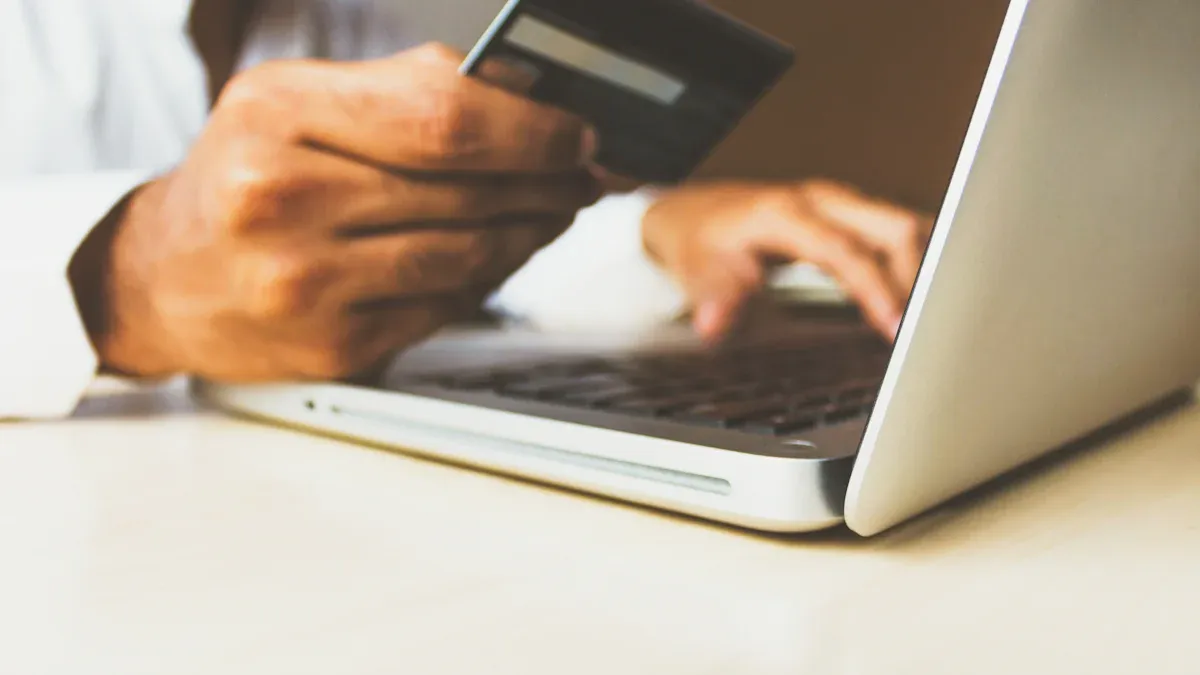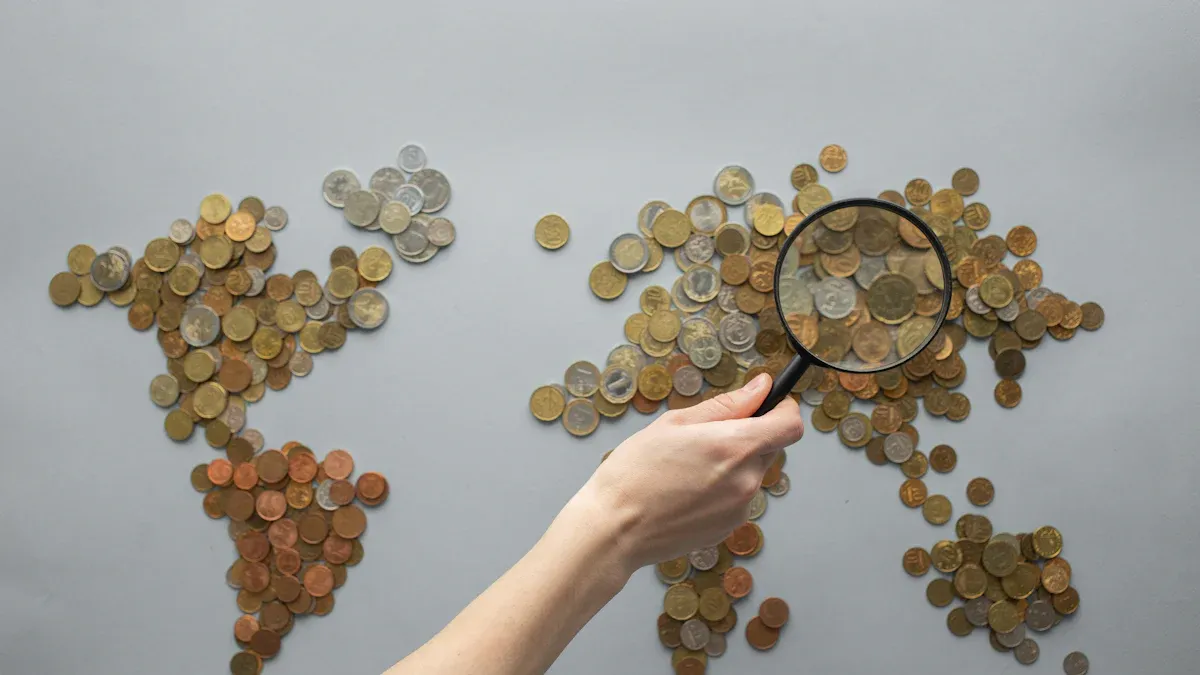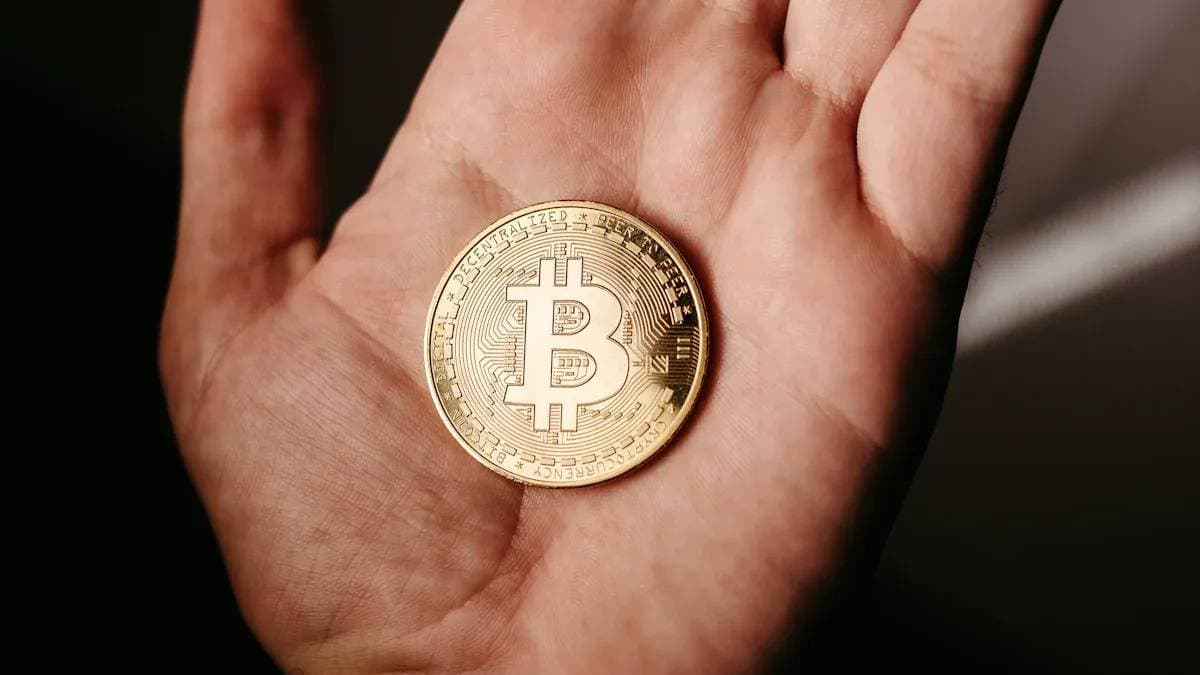- EasyCard
- Trade
- Help
- Announcement
- Academy
- SWIFT Code
- Iban Number
- Referral
- Customer Service
- Blog
- Creator
How to Use Stablecoins for International Payments: A Beginner's Operation Guide

Image Source: unsplash
Have you ever been troubled by the high fees and long waits of traditional wire transfers? An international wire transfer’s handling fee can reach 25 to 50 USD, and it takes several business days to arrive. Now, stablecoins (like USDT) provide you with a better option.
Stablecoin international payments can be completed almost instantly, unrestricted by bank operating hours, allowing you to control your funds anytime, anywhere.
This article provides you with a clear operation process to help you complete cross-border payments safely and efficiently, thoroughly simplifying your global transaction experience.
Key Points
- Stablecoin payments are faster and cheaper than traditional bank wires, saving up to 25% in fees.
- When choosing a payment platform, prioritize security, fees, and specific features, such as Biyapay, OKX, and Binance.
- After purchasing USDT, confirm the recipient’s wallet address and blockchain network (like TRC-20), as transfers cannot be reversed once completed.
- The TRC-20 network, with its low fees and fast transactions, is the top choice for daily international payments.
- After the recipient receives USDT, release it on the platform only after confirming funds arrive in the bank account to prevent fraud.
Choosing Cost-Effective and Secure Payment Platforms

Image Source: unsplash
Choosing a suitable platform is your first step to successfully completing stablecoin payments. A good platform not only helps you save money but also ensures your fund security. You need to evaluate from three dimensions: security, fees, and specific features.
Evaluation Criteria: Security and Cost
When evaluating platforms, put security first. A reliable platform usually has the following features:
- Compliant Operations: Complies with anti-money laundering (AML) and know-your-customer (KYC) regulations.
- Account Security: Provides two-factor authentication (2FA) and SSL encryption and other basic security measures.
- Data Protection: Follows strict data privacy regulations to protect your personal information.
Fees are the second factor you need to focus on. You need to compare transaction handling fees (Maker/Taker fees) across platforms, withdrawal fees, and exchange rate spreads in C2C/P2P transactions. Maker fees apply to limit orders that add market liquidity, with lower rates; Taker fees apply to immediate market orders, with slightly higher rates.
Comparison of Mainstream Cryptocurrency Exchanges
There are many exchanges on the market, such as Biyapay, OKX, and Binance, all providing convenient C2P/P2P markets. Emerging payment platforms like Biyapay usually have advantages in fee structures, focusing on simplifying payment processes. OKX and Binance have large user bases and deep market liquidity.
You can intuitively compare entry-level trading fee rates across platforms in the table below:
| Exchange | Taker Fee (Entry Level) | Maker Fee (Entry Level) |
|---|---|---|
| Biyapay | 0.10% | 0.10% |
| OKX | 0.10% | 0.08% |
| Gemini | 0.40% | 0.20% |
Specific Needs Payment Solution Selection
Based on your payment scenarios, you may need different tools:
- Small Daily Payments: For online shopping and other small payments, consider using crypto virtual credit cards. For example, Biyapay’s virtual credit cards have no issuance or monthly fees and can be used directly with global online merchants, very convenient.
- Large Commercial Payments: For large remittances, professional payout platforms like StablePayx are better choices. They bypass traditional bank intermediaries, with fees far lower than traditional wires.
| Payment Method | Fee Range |
|---|---|
| Traditional Bank Transfer | 3-5% |
| Stablecoin Transfer | 0.1-0.3% |
Choosing the platform best suited to your needs lays a solid foundation for your cross-border payment journey.
Acquiring USDT and Preparations
After selecting a platform, the next step is acquiring USDT for payments. This process includes several key preparations to ensure your operations are both secure and smooth.
Completing Identity Verification (KYC) Process
Before starting transactions, all compliant platforms require you to complete identity verification, i.e., KYC (Know Your Customer) process. This protects platform and user fund security and prevents illegal activities. You need to prepare the following materials:
- Personal Details: Your full name, date of birth, and residential address.
- Identity Proof Documents: Usually your passport or ID card.
- Proof of Residence: For example, recent utility bills or bank statements.
- Selfie Verification: Complete a simple selfie or video action as prompted by the platform.
The KYC process usually takes only a few minutes to one day to complete. Ensure submitted photos are clear, documents are valid, to avoid rejection.
Purchasing USDT via C2C/P2P Markets
After verification, you can purchase USDT. For beginners, the most direct way is through the platform’s C2C (Customer-to-Customer) or P2P (Peer-to-Peer) market. Here, you can buy USDT directly from other users like shopping on an e-commerce platform. You can use various payment methods, such as bank transfers, to pay the seller. After payment, the platform releases the seller’s escrowed USDT to your account.
Understanding Transfer Networks and Wallet Addresses
This is the most critical and error-prone step. USDT can exist on different blockchain networks, most commonly TRC-20 (Tron network) and ERC-20 (Ethereum network).
- Transfer Network: Like different courier companies (e.g., FedEx and UPS).
- Wallet Address: Like your delivery address.
You must ensure the sender and recipient use the same network. An address on one network cannot receive assets from another. For example, TRC-20 addresses usually start with T, while ERC-20 addresses start with 0x start with.
How to Choose Networks to Reduce Transfer Fees
Choosing different transfer networks results in vastly different fees and speeds. The TRC-20 network is favored for its low fees and fast transactions, while the ERC-20 network, though widely used, has higher fees.
| Feature | TRC-20 (Tron) | ERC-20 (Ethereum) |
|---|---|---|
| Address Style | Starts with T | Starts with 0x |
| Transaction Speed | Fast (about 3 seconds) | Slower (about 15 seconds, slower when congested) |
| Transaction Fee | Low (usually under $3) | High (may exceed $30) |
| Security | Medium | High |
For daily international payments, especially cost-focused, the TRC-20 network is your top choice. Its transfer fees are extremely low, almost negligible, saving you significant handling fees.
Core Steps to Execute Stablecoin International Payments

Image Source: pexels
You have prepared the platform and USDT; now enter the core phase: executing the transfer. This step requires extra care because blockchain transactions, once confirmed, cannot be reversed. Following these steps ensures your first stablecoin international payment goes smoothly.
Obtain Accurate Transfer Information from the Recipient
This is the most error-prone and critical step in the process. Before initiating any transfer, you must request and verify three core pieces of information from the recipient:
- Recipient Wallet Address: A unique string of letters and numbers. Obtain it via copy-paste to avoid manual input errors.
- Correct Blockchain Network: Confirm which network the recipient uses. For example, TRC-20 network addresses usually start with
T, while ERC-20 network addresses start with0x. - MEMO or Tag (if needed): Some platforms or networks require an additional numeric tag (MEMO) to identify the receiving account. If provided by the recipient, fill it accurately, or funds may not arrive.
Important Tip: Choosing the wrong network is the most common beginner mistake. If you send USDT to the wrong network, funds do not disappear but get stuck on that network and become inaccessible. Worse, if the address is valid but belongs to someone else, once the transaction completes, funds are almost impossible to recover. Therefore, repeated confirmation is the only way to ensure fund security.
Detailed Platform Internal Transfer Initiation
After obtaining accurate information, initiate the transfer within the exchange. The operation process is similar, usually including these steps:
- Enter Withdrawal Page: Log into your exchange account, find “Assets” or “Wallet” options, then click “Withdraw.”
- Select Currency and Network: Choose USDT from the currency list. Then, in network options, select the agreed transfer network (e.g., TRC-20).
- Fill Address and Amount: Paste the wallet address copied from the recipient into the “Address” field. Then, enter the USDT amount to transfer. The platform automatically calculates and displays the network fee.
- Final Review: Before clicking “Withdraw,” check all information one last time: currency, network, address, and amount. Ensure every detail is accurate.
- Complete Security Verification: To protect your assets, the platform requires security verification. This usually needs multiple codes, such as:
- Email Verification Code
- SMS Verification Code
- Google Authenticator (2FA) Code: A 6-digit dynamic code changing every 30 seconds, providing extra account security.
After verification, your withdrawal request is successfully submitted.
Use Blockchain Explorers to Track Transaction Status
After submitting the transfer, find a string called Transaction ID (TxID) or Transaction Hash (Tx Hash) in the platform’s withdrawal history. This is a unique transaction credential. Use it to track status on the corresponding blockchain explorer. For example, TRC-20 transactions can be queried on Tronscan.
On the blockchain explorer, focus on these details:
- Transaction ID (TxID): Your transfer credential for querying details.
- Status: Shows if the transaction succeeded. When status shows “CONFIRMED” or “SUCCESS,” the transaction is confirmed on the blockchain.
- Block Confirmation Number: Indicates how many new blocks were created after your transaction was packed. More confirmations mean the transaction is more irreversible.
Once the status shows “success,” the recipient has received your funds. Send the transaction details page link or screenshot to them as payment proof.
Security Guidelines to Prevent Fraud and Fund Loss
When conducting stablecoin international payments, stay vigilant against common fraud tactics.
A common scam is “Address Poisoning”. Scammers create a wallet address very similar to your usual one (maybe only the last few digits differ), then send a tiny USDT amount to your wallet. When copying from transaction history, you might accidentally copy this “poisoned” address, leading to fund theft.
To protect yourself, develop these security habits:
- Always Verify Full Address: Do not just check the first and last few characters. Before transferring, compare word-for-word with the original address provided by the recipient.
- Use Address Book Feature: Save common, verified recipient addresses in the exchange’s address book. This avoids copying from unsafe sources.
- Beware Phishing Websites: Do not click links in suspicious emails or messages. Scammers create fake websites identical to official exchanges to trick you into entering account info. Always access official sites via saved bookmarks.
By following these core steps and security guidelines, you can confidently leverage stablecoin advantages for secure, fast, and low-cost global payments.
How Recipients Collect and Convert to Fiat
After receiving USDT as the recipient, the next step is safely converting it to local fiat currency, such as USD or HKD, and depositing into your bank account. This process is also simple and direct but requires vigilance.
Process of Selling Stablecoins on Exchanges
The most common way to convert USDT to fiat is through the exchange’s P2P (Peer-to-Peer) market. Think of it as selling your USDT directly to another user.
Here are the specific operation steps:
- Access P2P Market: Log into your exchange account, find and enter the P2P trading area.
- Select Sell Option: Choose to “sell” USDT and specify the fiat type you want to receive (e.g., USD).
- Screen Buyers: See a buyer list. Carefully evaluate their reputation, transaction completion rate, and supported payment methods.
- Create Order: Enter the USDT amount to sell and select your receiving account info (e.g., your Hong Kong licensed bank account).
- Wait for Payment: After confirming the order, the platform temporarily locks your USDT. Wait for the buyer to pay your bank account.
Security First: Confirm Receipt Before Releasing Before clicking “confirm payment received,” log into online or mobile banking to personally verify:
- Amount Correct: Received funds match the order amount exactly.
- Funds Arrived: Confirm funds are successfully deposited, not in “processing” status. Only after 100% confirming receipt, release your USDT on the platform. This is key to protecting against fraud.
Withdrawing Fiat from Platform to Bank Account
Some large exchanges allow direct withdrawal of fiat balances (like USD or EUR) via wire to your personal bank account.
The operation process is usually as follows:
- Bind Bank Account: Before withdrawing, bind and verify a bank account in your name. Some platforms require a small deposit through the account to activate withdrawals.
- Initiate Withdrawal Request: On the “Assets” or “Wallet” page, select “Withdraw,” then fiat withdrawal.
- Fill Info and Confirm: Select your verified bank account, enter withdrawal amount, review all details (including fees), then confirm.
Note that withdrawal fees and processing times vary greatly across platforms. For example, SEPA (Single Euro Payments Area) withdrawals may take at least one business day, while other international wires may cost 0.3% to 3%, depending on the platform and service.
You now master the three core steps of stablecoin international payments: choose the right platform, securely buy coins, carefully transfer.
Stablecoin international payments offer revolutionary advantages in cost and efficiency, saving you up to 25% in fees. Amid USD dropping 9.9% within the year exchange fluctuations, stablecoins are your digital piggy bank, helping avoid risks.
We encourage starting small and always prioritizing info verification and account security. Mastering this skill lets you confidently manage global fund flows.
FAQ
Are stablecoin payments legal?
The compliance of stablecoin payments depends on your region’s laws and regulations. For example, in Hong Kong, transactions via licensed compliant platforms are legal. Always choose platforms adhering to local anti-money laundering (AML) policies to ensure operational compliance.
Why are TRC-20 network fees so low?
Different blockchain networks have varying technical designs and processing capacities. The TRC-20 network’s design allows handling large transaction volumes at lower costs, like a highly efficient courier company. This makes it ideal for small and high-frequency payments, saving you significant fees.
What if I transfer to the wrong address?
Blockchain transactions are irreversible. If you send USDT to the wrong address, funds are likely permanently lost. Therefore, repeatedly verify the recipient address and network before clicking “send.” This is the only way to ensure fund security.
Will USDT’s price fluctuate?
USDT aims to maintain a 1:1 peg with USD. But in actual trading, due to market supply-demand changes, its price may have very minor fluctuations, e.g., between $0.99 and $1.01. However, this volatility is far less than other cryptocurrencies.
*This article is provided for general information purposes and does not constitute legal, tax or other professional advice from BiyaPay or its subsidiaries and its affiliates, and it is not intended as a substitute for obtaining advice from a financial advisor or any other professional.
We make no representations, warranties or warranties, express or implied, as to the accuracy, completeness or timeliness of the contents of this publication.




Contact Us
Company and Team
BiyaPay Products
Customer Services
BIYA GLOBAL LLC is a licensed entity registered with the U.S. Securities and Exchange Commission (SEC No.: 802-127417); a certified member of the Financial Industry Regulatory Authority (FINRA) (Central Registration Depository CRD No.: 325027); regulated by the Financial Industry Regulatory Authority (FINRA) and the U.S. Securities and Exchange Commission (SEC).
BIYA GLOBAL LLC is registered with the Financial Crimes Enforcement Network (FinCEN), an agency under the U.S. Department of the Treasury, as a Money Services Business (MSB), with registration number 31000218637349, and regulated by the Financial Crimes Enforcement Network (FinCEN).
BIYA GLOBAL LIMITED is a registered Financial Service Provider (FSP) in New Zealand, with registration number FSP1007221, and is also a registered member of the Financial Services Complaints Limited (FSCL), an independent dispute resolution scheme in New Zealand.




















